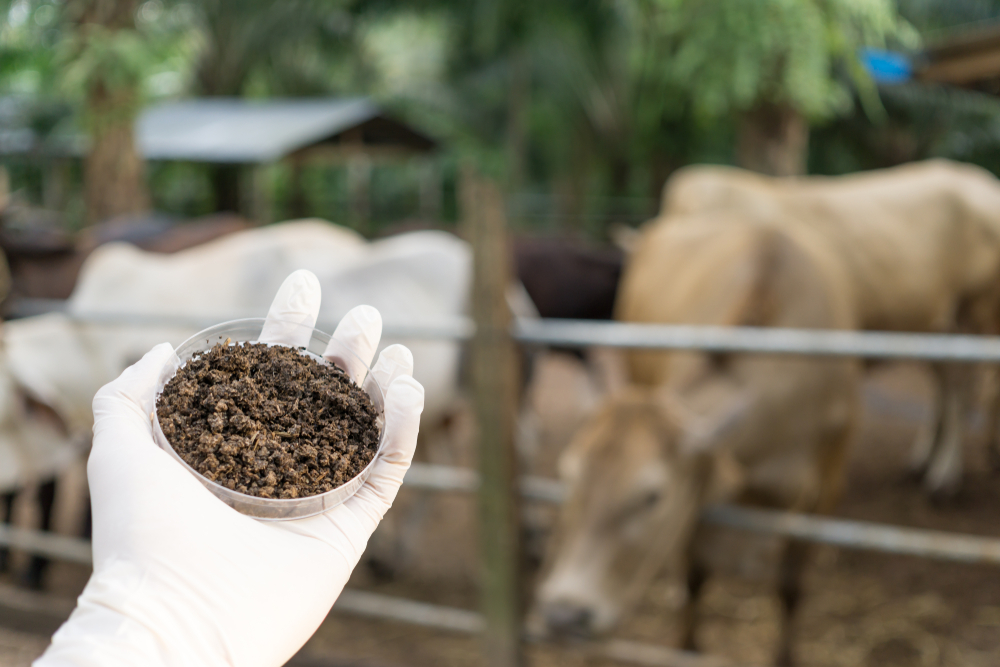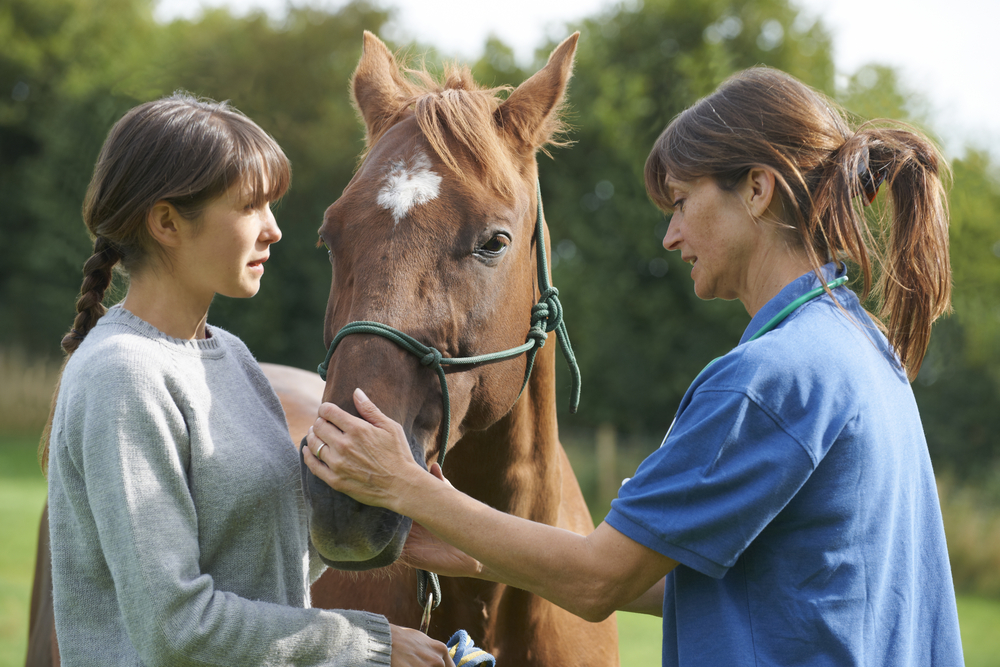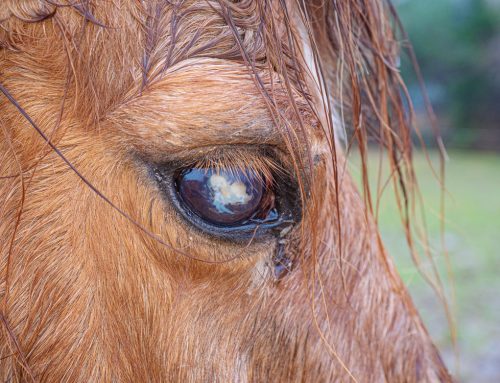Fecal egg counts provide valuable information for determining and designing a parasite control program for horses, small ruminants, and cattle. They can help estimate an animal’s parasite load, demonstrate seasonal changes in pasture infection, determine a dewormer’s effectiveness, and evaluate animals’ genetic differences. Our Leatherstocking Veterinary Services team explains what fecal egg counts involve and why regular testing is so important.
What is a fecal egg count?
A fecal egg count evaluates an animal’s manure for worm eggs. The test provides a quantitative assessment, expressed as eggs per gram (epg) of manure, as opposed to a simple positive or negative result provided by simple fecal flotation procedures, and also identifies the parasites. Several factors can influence a fecal egg count, such as:
- Age — Young animals are more susceptible to parasites.
- Location — Particular parasites are more commonly found in certain geographic areas.
- Season — The parasite may be more active during particular seasons, according to the life cycle.
- Travel — Traveling can expose your animal to parasite infected animals, increasing their exposure risk.
- Pasture load — Overcrowded pastures can increase an animal’s parasite exposure.
- Stress — Factors that stress an animal, such as inclement weather and handling, can compromise their immune system and make them more susceptible to parasites.
- Health — Sick animals are at higher risk for parasite infection.
Parasites are becoming increasingly resistant to deworming medications, but deworming animals based on their fecal egg counts helps ensure that only affected animals are treated, reducing the risk that parasites will develop resistance.
How is a fecal egg count performed?
A fecal egg count is performed on an animal’s manure sample—the fresher the better—and requires two to four grams, or about a tablespoonful, for an accurate test. The most common technique is the McMaster test, which involves measuring the sample in the laboratory, mixing the sample with a floatation solution, and microscopically evaluating a small portion of the prepared sample to count the visible parasite eggs on a specialized counting slide. The number of eggs in the manure can be determined based on the dilution and fecal grams evaluated. The fecal egg count is reported as epg, and the higher the epg count, the higher the animal’s parasite burden.
How many animals should have a fecal egg count?
As a general rule, 30% of the animals in a population have 80% of the parasites. Some animals have a higher parasite susceptibility, and the best way to identify these animals is to test every animal. However, if you have a large herd or flock, this isn’t feasible, but a useful fecal egg count must reflect the group’s general makeup. Typically, you need samples from at least 15 animals in each age group for a reliable estimate.
What other factors are important when developing a deworming plan?
For small ruminants possibly affected by Haemonchus (i.e., barber pole worm), a fecal egg count should not be the sole indicator of when an animal should be dewormed. A fecal egg count provides only information about the parasites the animal was shedding when the sample was collected. A mature barber pole female can produce 3,000 to 10,000 eggs per day, while an immature worm may not produce any eggs, but still consumes blood. The season, and the animal’s FAMACHA score, body condition score, diarrhea presence, overall health, and treatment history should also be considered.
How can fecal egg counts detect dewormer resistance?
The fecal egg count reduction test (FECRT) compares a particular animal’s or group’s fecal egg counts immediately before deworming treatment with a fecal egg count taken 10 to 14 days after treatment. Waiting for at least 10 days after deworming allows the parasites that the drug affected but did not kill to return to full egg production. Waiting more than 14 days after deworming allows parasites that infect the animal after treatment to mature and start producing eggs. When applicable, the animals should be weighed to ensure the correct deworming dose is administered. Also, ensure the drug isn’t expired. Results can be interpreted as follows:
- FECRT > 90% — Your deworming medication is working as intended, and you should continue to monitor your animals.
- FECRT between 50% to 90% — Resistant worms are present in your animals in numbers that mean the drug is no longer fully effective. You may need to use an alternative medication or combination treatment.
- FECRT < 50% — The resistant worms present in your animals are significantly reducing the medication’s effectiveness and alternative medication is likely necessary.
When should I perform fecal egg counts?

In cattle and horses, fecal egg counts should be performed in the spring and fall. For small ruminants, testing is recommended in early to mid summer, when at least 80% to 95% of the eggs are likely to be Haemonchus, the most concerning parasite in these animals.
Other parasite control measures
Regular fecal egg testing is only one element of a sustainable parasite control program. Other factors include:
- Treatment — You must select, dose, and use an appropriate dewormer that targets the parasites present.
- Environmental management — Keep your animals’ dry lot, pastures, and other living spaces dry and manure free to help guard against parasite infections.
Contact our Leatherstocking Veterinary Services team if you need a fecal egg count on your horse, cattle, or small ruminants, or if you have questions about your deworming protocol.







Leave A Comment